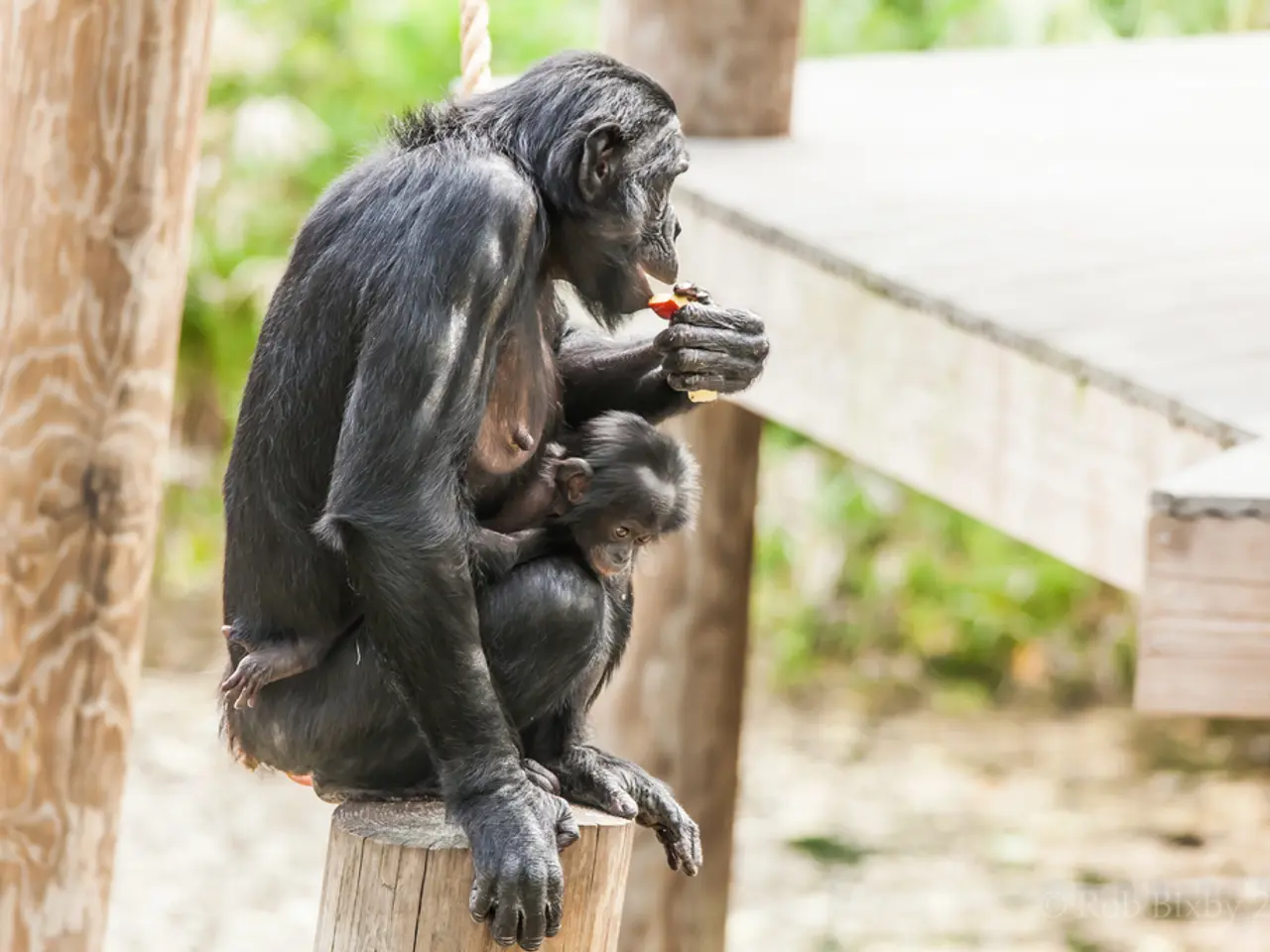Primates exhibit behavioral patterns akin to human social interactions
In a groundbreaking study, researchers from the Psychology Department at the University of Durham have discovered that great apes, specifically bonobos and chimpanzees, exhibit behaviours that were previously thought to be unique to humans. The study, which involved observing 1,242 interactions between apes in four different zoos in France, Switzerland, and the USA, has shed new light on the social dynamics of these primates.
The research, led by experts from the University of Durham, has shown that bonobos are friendly towards unknown conspecifics, a behaviour that is evident in their frequent exchange of entry signals and mutual gazes. In fact, bonobos exchanged entry signals and mutual gazes 90% of the time, while chimpanzees did so 69% of the time.
Moreover, the study has revealed that apes engage in 'joint commitment' during the entry and exit phases of interactions. This behaviour, long considered unique to humans, is now observed among great apes. Exit signals were even more frequent, with 92% of bonobos and 86% of chimpanzees displaying signals to end interactions.
The study also found that bonobos use gestures and signals to resume a grooming activity they were previously occupied with, even when they were interrupted. This behaviour, which resembles patterns of human politeness, is more pronounced when interacting with a social partner that is less socially close to them.
One of the most intriguing findings of the study is the mutual awareness in signalling before and after an encounter. This trait, never previously seen in any species other than humans, suggests a level of social cognition and understanding that was previously thought to be exclusive to humans.
Researchers such as Josep Call and Michael Tomasello, who have been investigating ape behaviour, focusing on species like chimpanzees and bonobos, found that apes use kinship-like signals in interactions similar to humans. This is demonstrated in cognitive and social studies comparing children and great apes.
The researchers advocate for future studies investigating why bonobos behave this way. The findings of this study not only challenge our understanding of great apes but also offer a fascinating insight into the evolution of social behaviours in humans.
In conclusion, the study reveals that apes such as chimps and bonobos show striking similarities to humans in how they interact using signals. This newfound understanding of the social lives of great apes not only broadens our perspective on these creatures but also offers a unique window into our own evolutionary past.
Read also:
- Nightly sweat episodes linked to GERD: Crucial insights explained
- Antitussives: List of Examples, Functions, Adverse Reactions, and Additional Details
- Asthma Diagnosis: Exploring FeNO Tests and Related Treatments
- Unfortunate Financial Disarray for a Family from California After an Expensive Emergency Room Visit with Their Burned Infant








